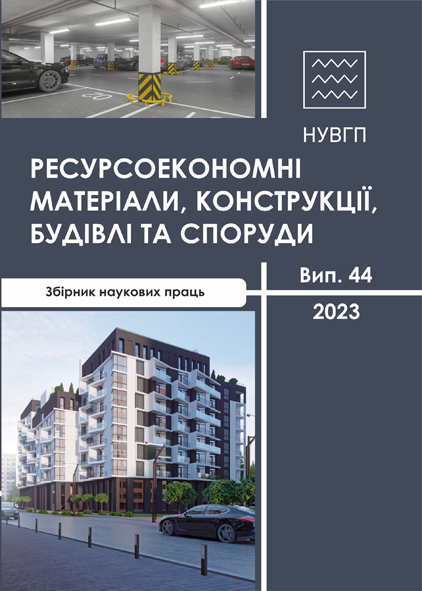STUDY OF THE INFLUENCE OF CALCIUM ON CRACK RESISTANCE AND LONG-TERM STRENGTH OF STEEL STRUCTURES OF HYDROTECHNICAL BUILDINGS
DOI:
https://doi.org/10.31713/budres.v0i44.03Abstract
As is known from numerous literature, practice and experience of the authors of this article, low-alloy construction steels are currently characterized by insufficiently high and stable corrosion-mechanical properties, as well as resistance to fatigue failure during long-term operation in aggressive environments in particular in sea salt water, especially in the presence of bacteria). This condition is explained by insufficient deoxidation and desulfurization of molten steel. It has been established that the introduction of calcium into aluminum-oxidized steel leads, as a rule, to the appearance of non-metallic inclusions in the cast metal, which may contain oxides, sulfides, as well as oxysulfides, which contributes to the clogging of rolled steel. However, it is known from metallurgical sources that with the optimal introduction of calcium impurities in the amount of 0.002-0.004% into the liquid molten metal at a temperature of 1600°C, liquid calcium aluminates give the formed non-metallic inclusions a globular shape, which easily coagulate and are quickly removed from the metal, which, in turn, contributes to a significant reduction in the contamination of rolled steel with harmful non-metallic inclusions. It should be noted that the role of calcium when added to metal in the smelting process is reduced not only to a change in shape and dispersion (quantity and size), but also to the possibility of significantly influencing the mechanical properties of steel due to phenomena associated with intercrystalline internal adsorption. Therefore, the changes in the structure of cast steel economically doped with calcium are caused by the fact that calcium, being a surface-active element, adsorbs on the surface of growing branches of dendrites (crystals) and delays their growth, thereby promoting both the growth of high-order branches and the emergence of new ones centers of crystallization. As a consequence of this action of calcium, there is a disoriented growth of dendrites and fragmentation of the dendritic structure. In addition, calcium as a reversible admixture tends to leave the volumes of phases and crystallites on the newly formed surface.

